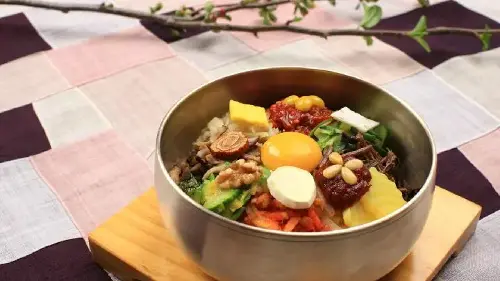
TEMPO.CO, Jakarta - The Jeolla Province in South Korea offers various exciting tourist attractions. From natural, cultural, to unique culinary experiences, this region can be a destination choice for Indonesian tourists who want to spend their 2025 Eid holiday.
In March, Yeongam, South Jeolla, hosts the largest spring festival in Korea that combines Korean culture and history. The Great Voyage-themed festival will be held for 9 days starting on March 29, 2025, on the Spring Flower Streets. The theme highlights the heritage of Wangin and the historical journey of envoys from the Joseon Kingdom to Japan.
 Yeongnam Wangin Culture. Doc. Korea Tourism Organization
Yeongnam Wangin Culture. Doc. Korea Tourism Organization
During the festival, there are Wangin parades, stage performances, the Joseon envoy procession, and youth trot singing competitions. In addition to history and culture, tourists can enjoy the blooming spring flowers along the festival area, which are predicted to bloom during the upcoming Eid holiday.
A vacation is not complete without tasting local cuisine. Here are some local culinary delights that can be tasted in the Jeolla Province.
1. Bibimbap
Bibimbap is a mixed rice dish from Korea. It is a combination of rice, side dishes, and vegetables, then topped with a mixture of gochujang sauce and sesame oil. Jeonju Bibimbap is known to be superior to other Bibimbap varieties, especially with the distinctive Jeonju bean sprouts and yellow-colored bean jelly that are usually special toppings in Bibimbap. There are also fresh raw meat toppings on top.
2. Ganjang Gejang
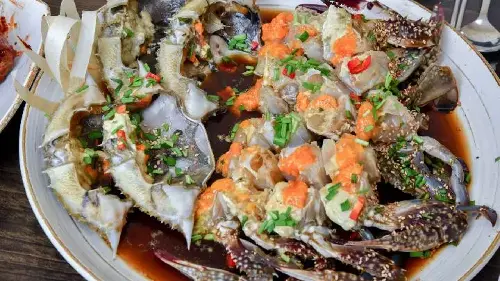 Ganjang Gejang. Doc. Korea Tourism Organization
Ganjang Gejang. Doc. Korea Tourism Organization
Ganjang Gejang is made from fresh raw crabs seasoned with various sauces and aged for several days to a week. This dish is sometimes called the "rice thief" because eating Ganjang Gejang with rice is very common. The Bongsandong area in Yeosu has various famous Ganjang Gejang restaurants.
3. Gomtang
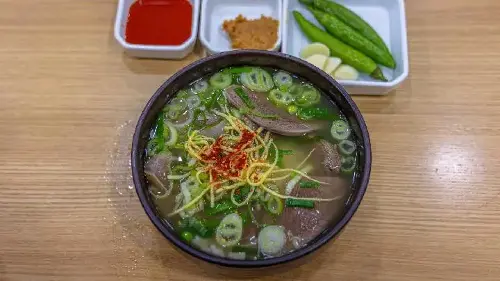 Gomtang. Doc. Korea Tourism Organization
Gomtang. Doc. Korea Tourism Organization
This soup is a clear soup that contains high-quality beef slices and beef bones that have been boiled for hours to obtain a soup with a smooth, fresh, clear broth and tender meat. Gomtang Naju streets are filled with various restaurants selling this food.
4. Chueotang (Loach Soup)
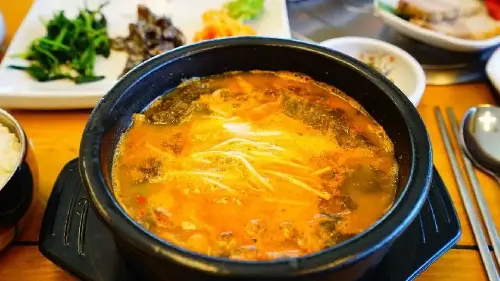 Chueotang. Doc. Korea Tourism Organization
Chueotang. Doc. Korea Tourism Organization
This soup is rarely found in Indonesia. It is made by boiling loach fish, then blending it with various seasonings and fresh vegetables. Once blended, the result will be cooked and mixed with vegetables and other ingredients to add to its enjoyment. This soup can be considered a high-protein, calcium-rich, and mineral-rich health food. Chueotang streets in Namwon near Gwanghalluwon Park are filled with various restaurants selling this soup.
5. Tteokgalbi
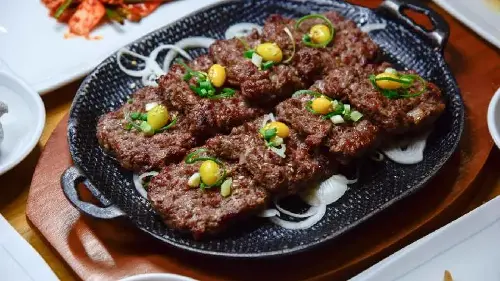 Tteokgalbi. Doc. Korea Tourism Organization
Tteokgalbi. Doc. Korea Tourism Organization
This meat dish is a grilled beef patty shaped like the beef patty commonly used in burgers. However, this dish is not eaten with bread, but with vegetables and rice. This dish has been a favorite of kings since the Joseon Kingdom period. This dish is popular in Gwangju and Damyang. In the Damyang area, many locals eat Tteokgalbi with bamboo-cooked or Daetongbap rice.
